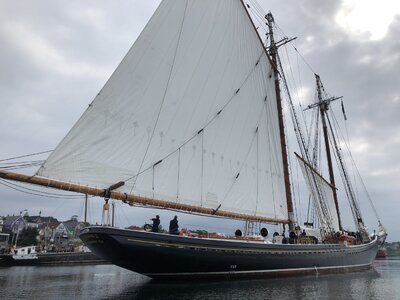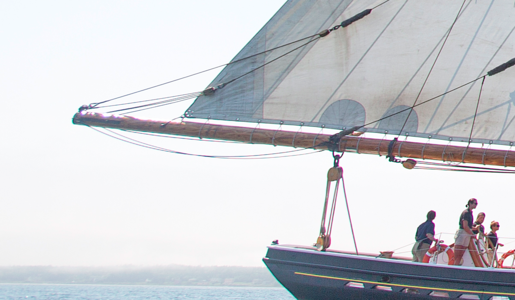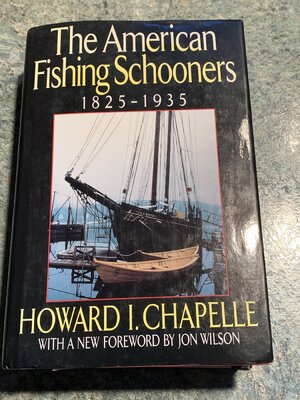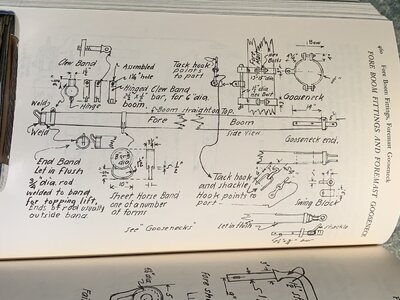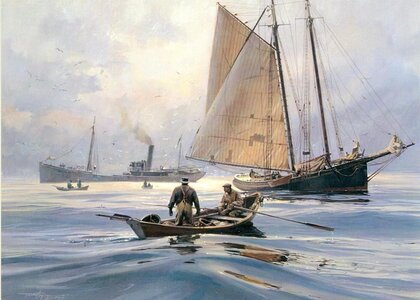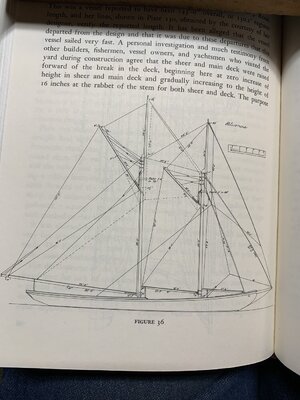As promised that I would provide additional details regarding lashing the sail luff to the hoops. Here is what came back from the Captain of Bluenose II through one of the crew about the 100% nylon rigging line that is linked in the reply below. Remember that frapping passes are the vertical wraps around the horziontals between the grommet and hoop.For new information on how the main sail and top gaff were tied to the hoops I have asked the Bluenose II crew for photos and information on how this is properly done. One crewmember, Emily S., sent the following description: "We start by lashing with a cow hitch on the sail, do about 8 crossing wraps and then frapping turns." She sent the following two photos which provide details about more than just the lashing:
First look at the hoops and how they are now secured to each layer.
Then look at the galvanized sheet metal mast protective band for wear from the boom jaws,
Then look at the luff plate/gromette with the protective canvas extension around the luff bolt rope canvas.
And lastly it is hard to see exactly how the lashing is started or completed. I have asked for more details and diagrams: how the cow hitch starts, the crossing path, then the vertical frapping, and lastly the final tie-off.
View attachment 207699Now the second photo which doesn't show much more than pulling the single line tight with the fid before tying it off:View attachment 207700
I'll pass the details along when received.
Rich
"Here is some more information from the Captain. I hope this helps!
We use a braided gangion from Brownell.

Brownell Gangion
Braided halibut gangion is known worldwide for quality. This twine offers a unique construction that resists twisting and tangling. The product is engineered not to unravel when cut and is treated with our specially formulated bonding agent to provide stiffness to resist excellent resistance to...
We middle about two fathoms of line on the thickest part of the hoop. We then pass the ends in opposite directions through the grommet on the sail. Eight passes is the normal amount. Then we add frapping passes starting at the sail and working towards the hoop. We finish with two reef knots. After the last reef knot we add an overhand knot for extra security. The ends are then trimmed.
We use the thickest part of the hoop because the gangion bears the most strain over the smallest area. The thinner part of the hoop bears on the forward side of the mast. It’s a small thing but we try to put everything in our favour. "
My own thought is that this is more than we could do on our models but does provide a manner that may be truncated with the small line that we may use depending upon scale. It does provide better insight to the schooner.
Rich





